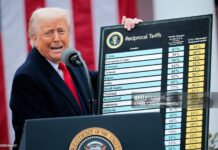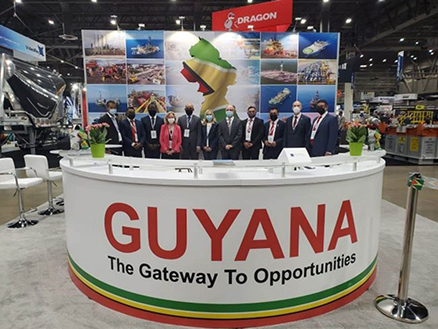By Darshanand Khusial News Americas, NEW YORK, NY, Oct. 13, 2021: Guyana now has an oil purse of US$436 million dollars in a foreign bank that mysteriously sits untapped in a period of our greatest need. We are in the midst of a deadly pandemic; one the world hasn’t experienced since the Spanish Flu of 1918 that took an estimated 20 to 50 million lives. We have had floods which have continued to ravage the country. Yet, we seek favors and loans from rich nations to aid our ills in a period where many of these countries are desperately trying to fund their health care systems and send cheques to their unemployed citizens. But do we need handouts? The oil money is rapidly accumulating, it jumped by US$92 million from April 13th, 2021, to July 3rd, 2021. However, the public does not know how this money is accumulating and what are the future growth expectations of this oil purse. But should one have to sleuth to decipher if the money is accumulating as per the terms of the Stabroek Block contact? In October 2017, Guyana signed up to the Extractive Industries Transparency Initiative (EITI), the global standard for good governance of oil, gas and mineral resources. The EITI Standard requires disclosure of revenues generated by the State from the extractives industry. In practice, this would entail the government of Guyana releasing data on the amount of oil extracted and the government’s share of production; and the revenues collected by the government from the sale of its share of oil for example profit oil, profit taxes, license fees etc. The purpose of this information is to promote better understanding of natural resource management among citizens thus informing debate that will lead to enhanced transparency and accountability. As an EITI implementing country, the government of Guyana is required to disclose the volumes received and sold by the state (or third parties appointed by the state to sell on their behalf), the revenues received from these sales, and the revenues transferred to the state from the proceeds of oil, gas and minerals sold. The disclosures could include ownership of the product sold and the nature of the contract, for example, spot or term. Examples of how other EITI implementing countries disclose their oil and gas sales include Columbia’s 2020 report, which details total crude produced for 2020 and the tables depict oil related taxes. In Nigeria, a crude oil lift table contains 258 numbers detailing barrels and sales value. But can the Guyana do better? Yes, if we analyze the 5-page report that was released by the previous government for January 2020, it detailed some of the answers to the oil production questions raised above. In fact, the January 2020 report, noted that the requirements of the Natural Resource Fund (NRF) Act of 2019 should be supplemented with additional data. The January 2020 report states, “…these reports may not contain sufficient information to allow one to determine how government revenues that are deposited into the NRF are calculated. As such, the Report on Petroleum Production and Revenues (RPPR) serves to bridge this gap by providing regular updates on petroleum production and revenues. The regular publication of the RPPR will allow for greater transparency in this new sector of the economy, ensuring that the public is fully aware of the amount of petroleum being produced and revenues being generated. Such transparency is important, given the magnitude of revenues that will be generated from this resource.” The current government should be able, at a minimum, to produce monthly oil production reports that match or exceed what the previous government released. After all, the previous government was just a few months into oil production, but we have been producing oil for more than a year now. Guyana has been undergoing an EITI review. With its lack of disclosure of oil production data, is the government wasting the taxpayers’ money on a review that it already knows it will fail because it is releasing two oil related numbers every three months? EDITOR’S NOTE: Darshanand Khusial is part of the non-profit Oil and Governance Network and a financial researcher with qualifications in management accounting and securities. He is also an IT expert who once served as the lead designer on the engine behind some of the largest retail sites in the world. He holds a Masters and Bachelors in Computer Engineering from University of Toronto. He has 15 patents granted in eCommerce software, augmented reality, retail, and dental fields. |
Home Commentary & Opinion on Caribbean and Latin American issues The Guyana Government Needs To Be More Transparent With Oil Production Data









